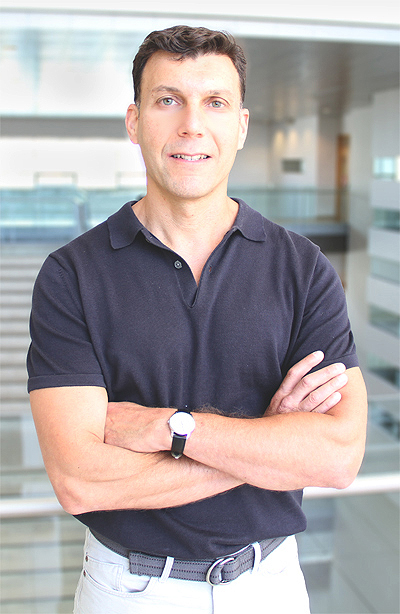York University researchers have discovered a novel mechanism used by muscle stem cells to sense energy, which is required for cell division, and the findings could have implications for studying how other stem cells divide, including cancer cells.
Researchers at York University’s Stem Cell Research Group in the Faculty of Health studied the role of a protein called p107, which they uncovered to be a key and fundamental component of the cellular metabolism network during cell division. The results provide a conceptual advance for how muscle stem cells in vivo and in vitro use energy to divide.
These findings on the role of the p107 protein have been published in the journal Nature Communications, and show it can manipulate the energy generation capacity of mitochondria, which results in a direct reduction of cell division. The p107 protein expression is found in most dividing cells and the findings now identify a potential universal cellular mechanism that could have implications for studies on cancer cell proliferation and stem cell fate decisions.

Corresponding author Anthony Scimè, a York University associate professor and leader of the Stem Cell Research Group, Molecular, Cellular and Integrative Physiology in the Faculty of Health, and his team say p107, a protein in the retinoblastoma (Rb) family, accomplishes this by sensing the overall energy requirements of muscle stem cells. It blocks energy production from the main source, known as the mitochondria, by repressing mitochondrial-encoded gene transcription. This reduces the production of ATP or energy in the cell by limiting electron-transport-chain-complex formation. The findings provide a conceptual advance for a universal mechanism for how cells regulate energy production to control cell division, which might include cancer cell division.
“This was really a very novel finding because no one suspected that: a) this historically known cell cycle protein would be involved in regulating metabolism; and b) that it would do it by actually entering into the mitochondria and downplay the ATP or energy produced,” said Scimè. “We found that if we sustained the levels of the protein p107 only in the mitochondria, we were able to stop the cell cycle and stop the cells from dividing. ATP output, controlled by the mitochondrial function of p107, is directly associated with the cell cycle rate.”
During the study, researchers looked at muscle stem cells and used a multitude of experimental techniques and methods involving molecular, cellular and whole-body applications. Different types of stem cells can be found throughout the human body and several can only differentiate into cells that belong to the same tissue or organ. In several subsequent experiments, Scimè and his team measured the amount of total energy made by muscle stem cells while they were growing in the presence or absence of p107. These experiments showed that p107-deleted muscle stem cells generated more energy than the controls. Scimè says keeping p107 from the mitochondria had the opposite effect and resulted in an increase in the number of muscle stem cells that would be available for new muscle.
These findings suggest that during the cell cycle, p107 is monitoring how much energy the cell has, and if the cell has too much it will move into the mitochondria and slow down the ATP (energy) production.
The fine-tuned function of stem cells is essential for tissue function. Muscle diseases such as muscular dystrophy, and complications such as muscle loss during aging, are associated with poorly functioning muscle stem cells. These stem cells are required to make fresh muscle that are lost in these disorders. Researchers say an understanding of how muscle stem cells work is critical to finding new treatments.
To learn more about Research & Innovation at York: follow us at @YUResearch; watch the animated video which profiles current research strengths and areas of opportunity, such as artificial intelligence and Indigenous futurities; and see the snapshot infographic, a glimpse of the year’s successes.
